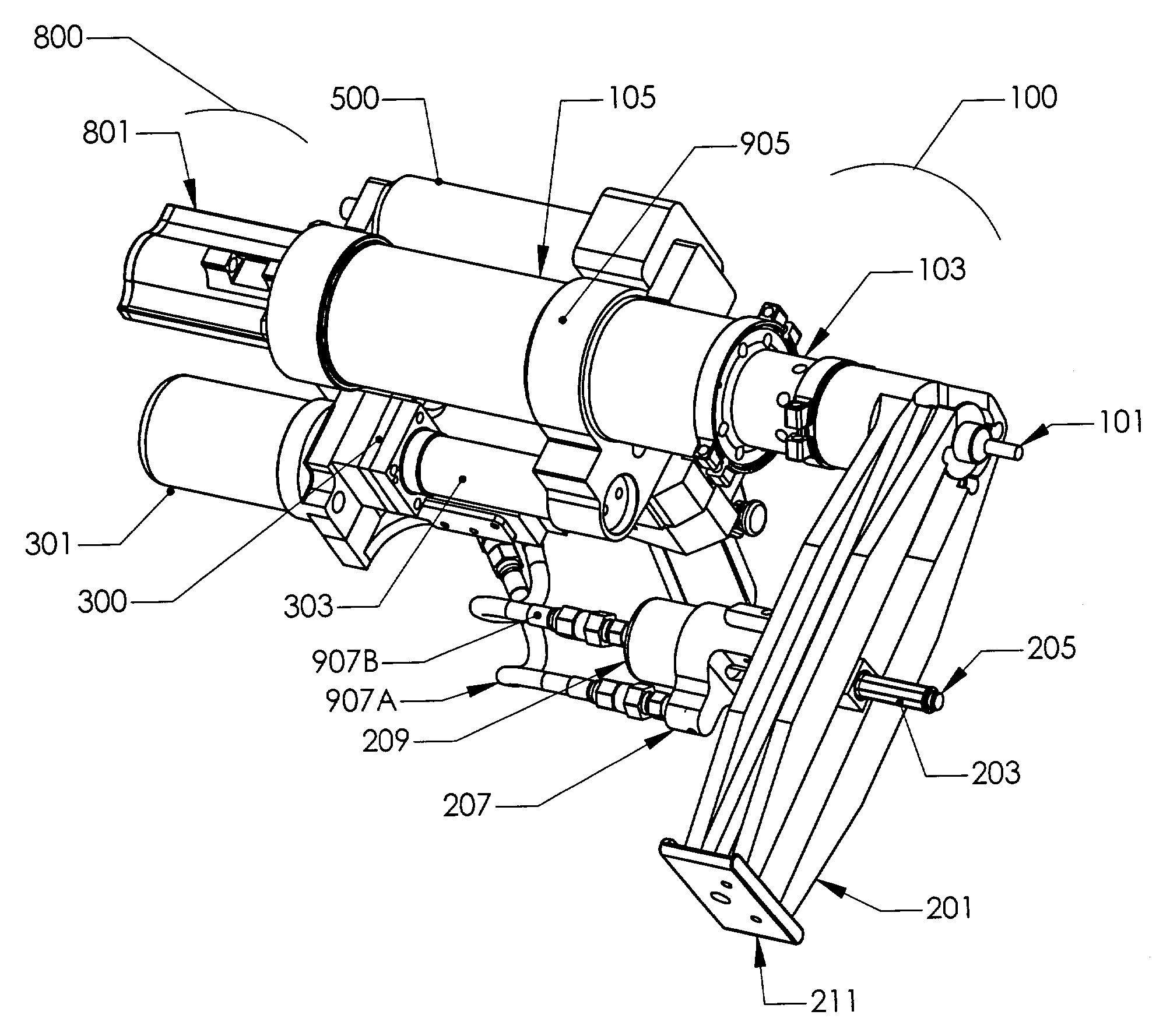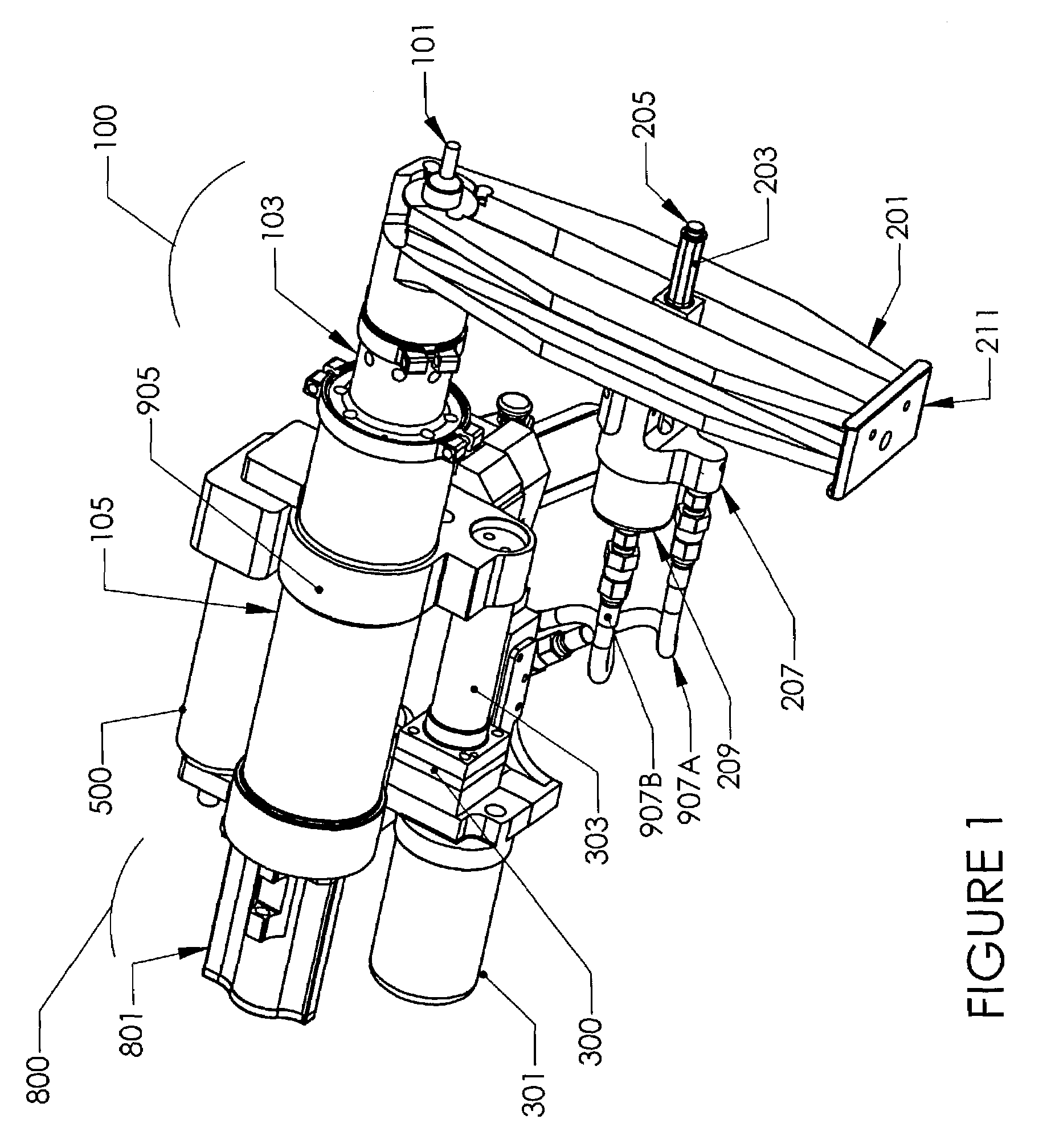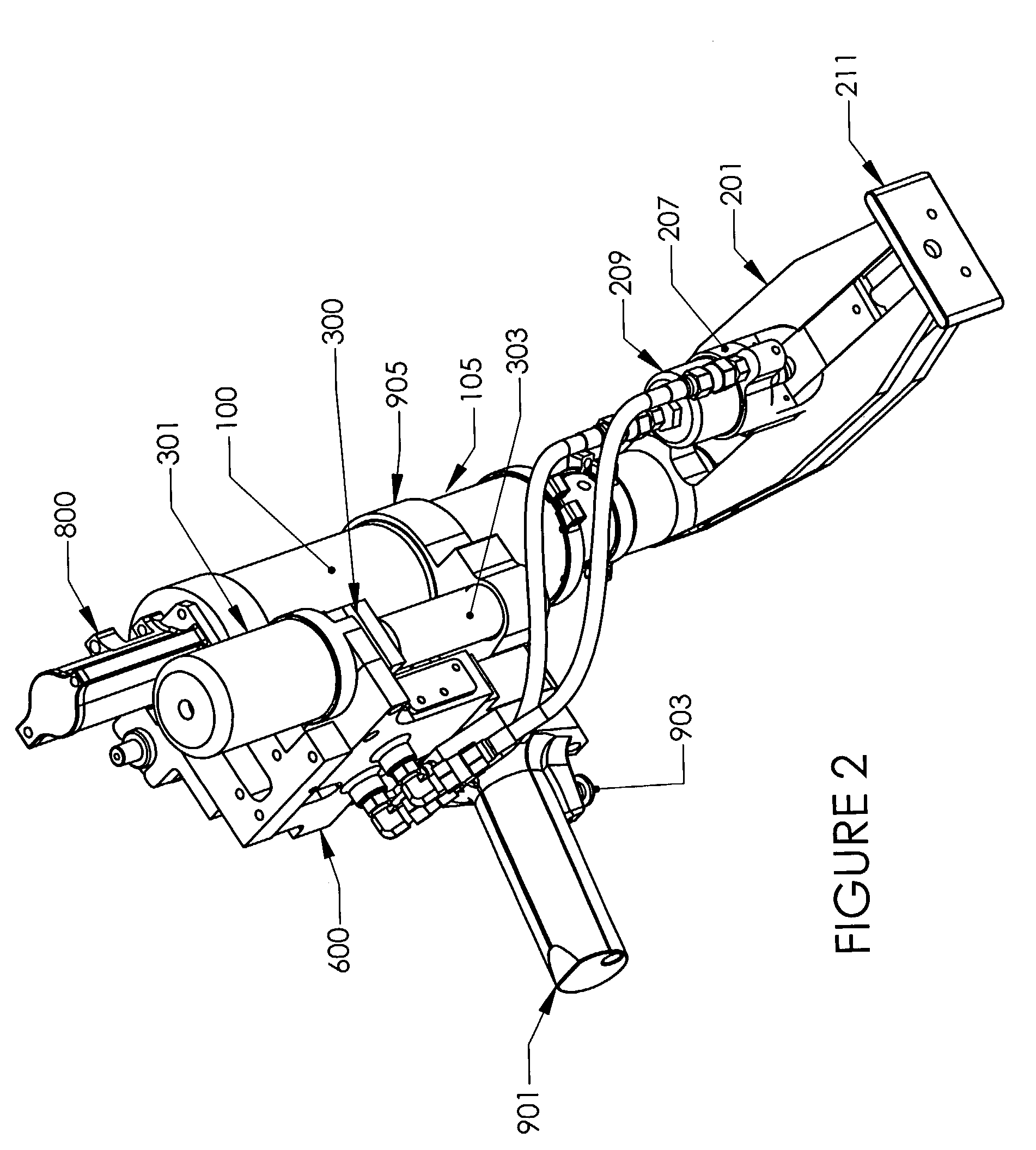Drill
a power tool and portable technology, applied in the field of powered drilling apparatus, can solve the problems of inability to be used in limited quarters, large and heavy motors, and prior art devices that are not adaptable to other manufacturing situations
- Summary
- Abstract
- Description
- Claims
- Application Information
AI Technical Summary
Benefits of technology
Problems solved by technology
Method used
Image
Examples
Embodiment Construction
[0039]Referring now to the drawings, and especially to FIGS. 1, 2, and 3 initially, the general configuration of a drill apparatus can be described. One of the main components of the drill of the present invention is a drill spindle assembly generally designated as reference numeral 100. The drill spindle assembly 100 has a main housing 105, and nosepiece 103 extending from the forward end of the main housing 105. The details of the nosepiece 103 and of the drill spindle 100 will be described later in the disclosure, the present discussion identifying only the general configuration of the drill. In any case, the drill nosepiece 103 holds a drill bit 101 which extends from the forward end of the drill nosepiece 103. The drill bit 101 is used to perform work on a hole in the workpiece (not shown in FIGS. 1, 2, and 3). The main housing 105 contains an air motor 107 (best seen in FIG. 4) which serves to rotate the drill bit 101 during operation of the apparatus. A feed assembly generall...
PUM
| Property | Measurement | Unit |
|---|---|---|
| Shape | aaaaa | aaaaa |
| Tension | aaaaa | aaaaa |
Abstract
Description
Claims
Application Information
 Login to View More
Login to View More - R&D
- Intellectual Property
- Life Sciences
- Materials
- Tech Scout
- Unparalleled Data Quality
- Higher Quality Content
- 60% Fewer Hallucinations
Browse by: Latest US Patents, China's latest patents, Technical Efficacy Thesaurus, Application Domain, Technology Topic, Popular Technical Reports.
© 2025 PatSnap. All rights reserved.Legal|Privacy policy|Modern Slavery Act Transparency Statement|Sitemap|About US| Contact US: help@patsnap.com



